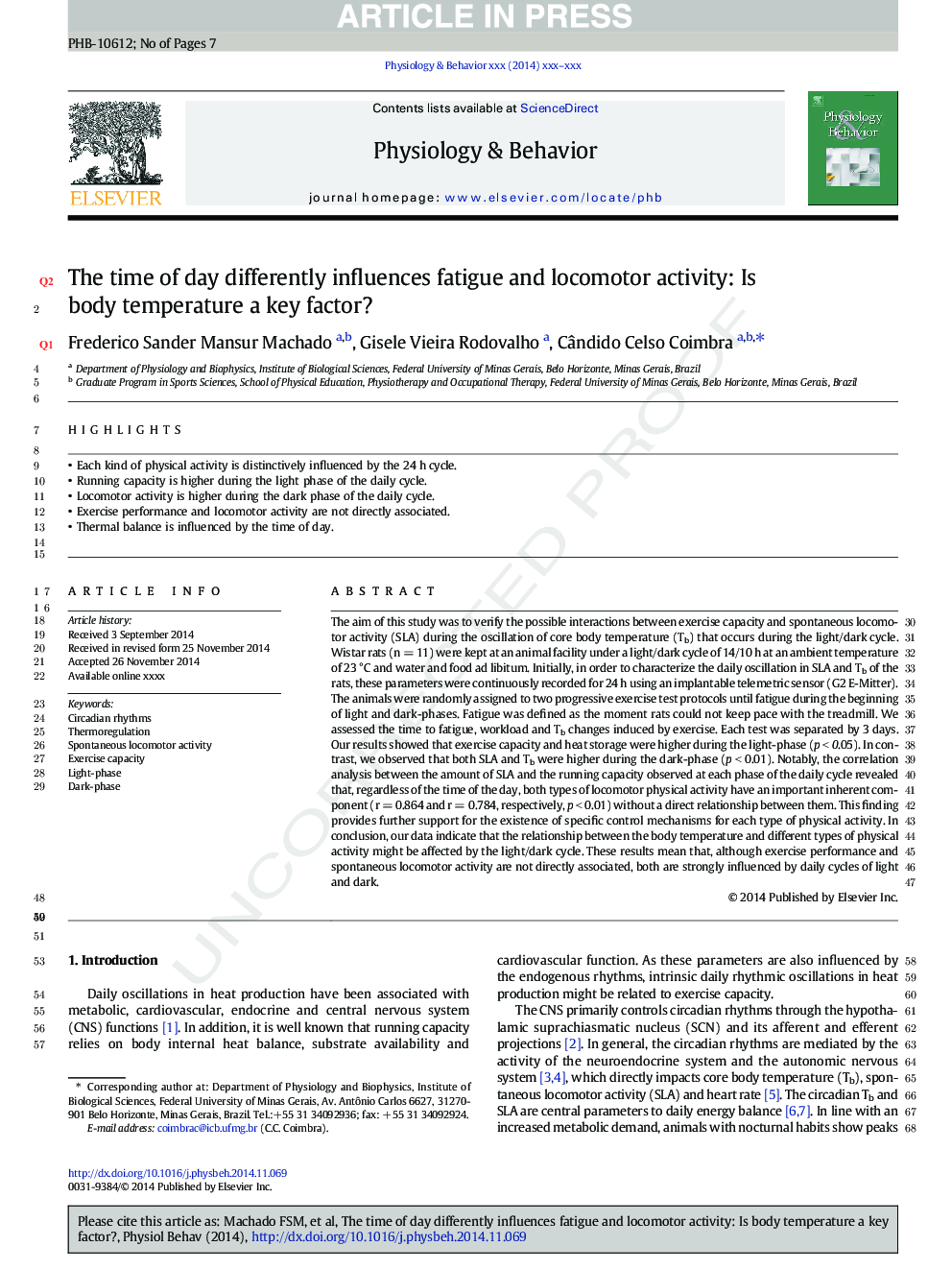| Article ID | Journal | Published Year | Pages | File Type |
|---|---|---|---|---|
| 5923800 | Physiology & Behavior | 2015 | 7 Pages |
Abstract
The aim of this study was to verify the possible interactions between exercise capacity and spontaneous locomotor activity (SLA) during the oscillation of core body temperature (Tb) that occurs during the light/dark cycle. Wistar rats (n = 11) were kept at an animal facility under a light/dark cycle of 14/10 h at an ambient temperature of 23 °C and water and food ad libitum. Initially, in order to characterize the daily oscillation in SLA and Tb of the rats, these parameters were continuously recorded for 24 h using an implantable telemetric sensor (G2 E-Mitter). The animals were randomly assigned to two progressive exercise test protocols until fatigue during the beginning of light and dark-phases. Fatigue was defined as the moment rats could not keep pace with the treadmill. We assessed the time to fatigue, workload and Tb changes induced by exercise. Each test was separated by 3 days. Our results showed that exercise capacity and heat storage were higher during the light-phase (p < 0.05). In contrast, we observed that both SLA and Tb were higher during the dark-phase (p < 0.01). Notably, the correlation analysis between the amount of SLA and the running capacity observed at each phase of the daily cycle revealed that, regardless of the time of the day, both types of locomotor physical activity have an important inherent component (r = 0.864 and r = 0.784, respectively, p < 0.01) without a direct relationship between them. This finding provides further support for the existence of specific control mechanisms for each type of physical activity. In conclusion, our data indicate that the relationship between the body temperature and different types of physical activity might be affected by the light/dark cycle. These results mean that, although exercise performance and spontaneous locomotor activity are not directly associated, both are strongly influenced by daily cycles of light and dark.
Related Topics
Life Sciences
Biochemistry, Genetics and Molecular Biology
Physiology
Authors
Frederico Sander Mansur Machado, Gisele Vieira Rodovalho, Cândido Celso Coimbra,
